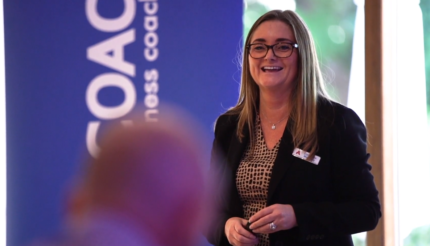The Art of Listening to Understand and Why it is So Important
The art of listening to understand and why it is so important. As a coach this is a hugely powerful skill to master when in a world driven by constant communication and information overload, listening has become somewhat of a lost art. However, genuine listening—listening to understand—can transform relationships, foster empathy, and build stronger connections. It’s more than just hearing words; it’s about truly engaging with the speaker and comprehending their message on a deeper level. Let’s explore the nuances of this invaluable skill and how it can be cultivated.
The Difference Between Hearing and Listening
Hearing is a passive act. It’s the simple reception of sound waves by our ears. Listening, on the other hand, is an active process. It requires intention, attention, and effort. When we listen to understand, we go beyond the superficial layer of words and seek to grasp the emotions, motivations, and context behind them.
The Benefits of Listening to Understand
- Improved Relationships: Whether in personal or professional settings, learning the art of listening will build trust and respect. It shows that you value the other person’s perspective and are willing to invest time and effort into understanding them.
- Conflict Resolution: Many conflicts arise from misunderstandings. By listening to understand, we can uncover the root causes of disagreements and work towards resolving them more effectively.
- Empathy and Compassion: Listening with empathy allows us to connect with others on an emotional level. It fosters compassion and helps us see the world from different viewpoints.
- Enhanced Learning: By fully engaging with what others say, we can absorb new information more thoroughly and broaden our knowledge and horizons.
Strategies for Effective Listening
-
Be Present
In our multitasking world, giving someone your full attention can be challenging. However, being present is crucial for mastering the art of listening. Put away distractions, make eye contact, and focus on the speaker. Show that you are engaged through nodding or verbal acknowledgments.
-
Avoid Interrupting
Interrupting someone not only disrupts their train of thought but also signals that you value your own words more than theirs. Allow the speaker to finish before responding. This shows respect and gives you a complete understanding of their message.
-
Reflect and Clarify
Reflecting back what you’ve heard can confirm your understanding. Phrases like “What I’m hearing is…” or “It sounds like you’re saying…” can help clarify and validate the speaker’s message. Don’t be afraid to ask questions if something isn’t clear.
-
Listen with Empathy
Empathy goes beyond words. It’s about feeling with the person. Try to understand their emotions and perspectives. This doesn’t mean you have to agree, but recognising and acknowledging their feelings can deepen the connection.
-
Be Patient
Silence can be uncomfortable, but it often provides the space needed for deeper insights to emerge. Don’t rush to fill gaps in conversation. Sometimes, the most profound understanding comes from what is left unsaid.
-
Practice Active Listening
Active listening involves nodding, maintaining eye contact, and giving verbal cues like “I see” or “Go on.” It’s about being engaged and responsive, showing the speaker that you are with them every step of the way.
Overcoming Common Barriers
- Preconceptions and Bias: Our biases and preconceptions can cloud our judgment. Be aware of them and strive to listen with an open mind.
- Emotional Reactions: Strong emotions can hinder our ability to listen objectively. Take a moment to calm down if you feel overwhelmed.
- External Distractions: Create a conducive environment for listening by minimising noise and interruptions.
The Transformative Power of Listening
The art of Listening to understand is more than a skill; it’s a mindset. It requires us to be humble, patient, and genuinely interested in others. When practiced consistently, it can transform not just our conversations, but our relationships and our worldviews.
Imagine a world where everyone listens to understand. Misunderstandings would diminish, empathy would flourish, and our connections with one another would strengthen. The art of listening to understand is a simple yet profound way to bring about positive change in our lives and communities.
So, let’s embark on this journey of becoming better listeners. Let’s strive to hear beyond the words, to understand the hearts and minds of those around us. In doing so, we’ll unlock the true power of communication and the beauty of human connection.





